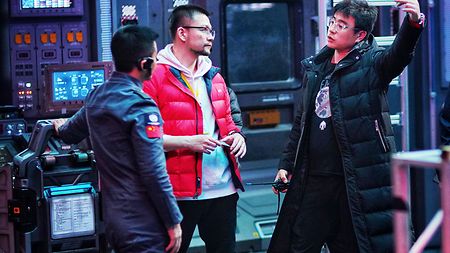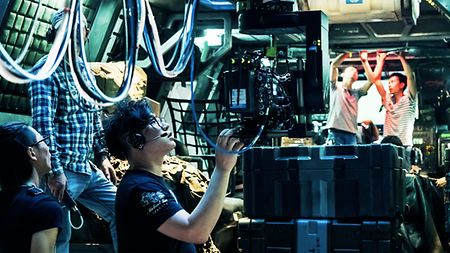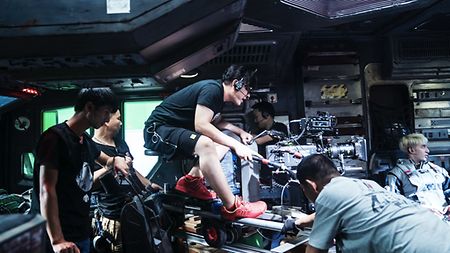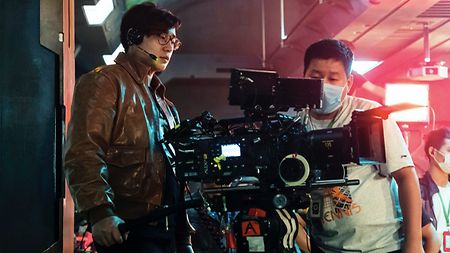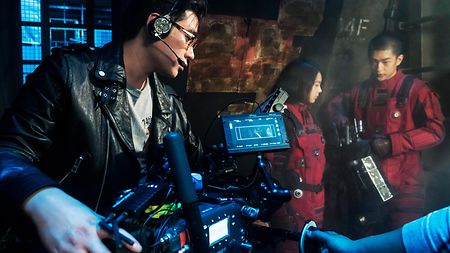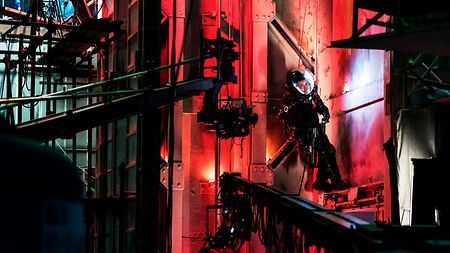Many scenes in “The Wandering Earth” were shot in a sound stage. Which focal length did you use for those scenes? Besides Master Anamorphic lenses, you also used ARRI Anamorphic Ultra Wide Zoom 19-36 mm, T4.2, an ultra-wide zoom lens. Was it easy to match these images with what was shot with Master Anamorphic lenses?
I wanted the audience to feel immersed, so I used lenses with shorter focal lengths more; 25 mm, 35 mm, 45 mm, and 50 mm were the ones I usually used. I used prime lenses when I could since I prefer them to zoom lenses.
One of the zoom lenses we used was ARRI’s Anamorphic Ultra Wide Zoom 19-36 mm T4.2. It gave us a wider angle which was perfect for big scenes. For example, when we wanted to show how small and helpless human beings are in nature, AUWZ gave us a very wide shot where the characters are only a very small part of the image. This is exactly what AUWZ can provide.
With Master Anamorphic lenses, the image quality stays pretty much the same even when using different apertures. To me, the various apertures give me a different depth of field. When you change aperture on some old lenses, the image quality also changes, but you don’t have this problem with Master Anamorphic lenses. Both MA lenses and AUWZ 19-36mm T4.2 lenses have a shallow depth of field and minimum distortion; they produce images that look similar, so it was easy to match and very suitable for what we were looking for.
What was the idea behind the lighting in “The Wandering Earth”?
The first rule we followed was to make sure all the lighting looked realistic. For instance, we needed to consider how the lighting was going to change according to the movements of Mars, the Earth, the Sun, and the engine. We also put some thoughts into color contrast. For example, the underground city where humans live was very crowded and messy. A high contrast, colorful image worked better than a clean one in these scenes. Here we used many different color lights and set them at different angles as background lighting.
Cold, white, hard lighting is from the sun. Cyan-blueish lighting is from the engine deep saturation of blue indicates that the engine is working, the faster it goes, the less saturated the blue tone would be. When the orange/red soft light from Mars gets stronger, it signifies a crisis on the horizon. We mainly used the SkyPanels and a lighting control console on set to change color, saturation, and brightness. We also used a large amount of T4, T5, T8 regular light tubes covered by gel as practicals. This way lights from different angle, with different color and brightness went along with the environment.
Even though we shot a lot in sound stages, we didn’t use a lot of lights. We tried to use environmental lighting as much as possible. For instance, I wouldn’t use a key light or fill light, instead, I used more practical lighting to make it look more real.

